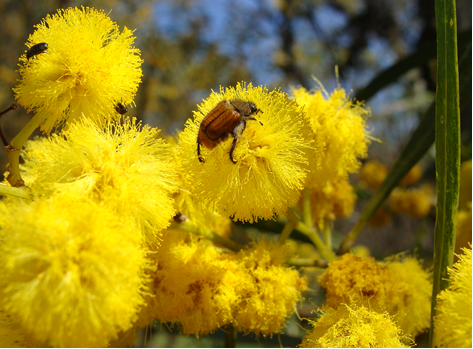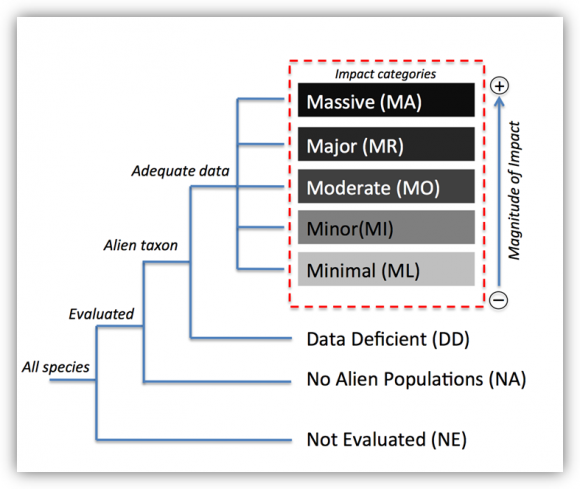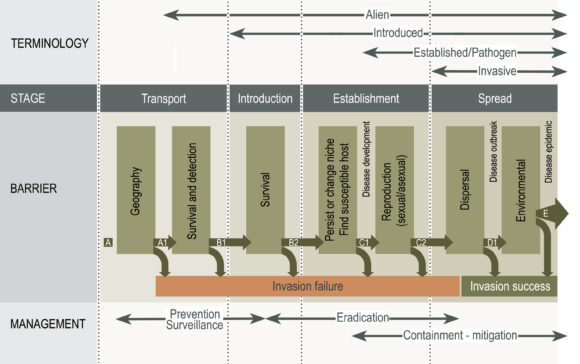18 February 2013 | By Anton Pauw
Can the colors or shapes of invasive plants tell us how they interact with native plants?
It is well known that invasive plants compete with native plants for a variety of resources, such as light and water. An overlooked form of competition is competition for pollinator visits. By drawing pollinators away from native plants, invasive plants my reduce seed production in native plants. Plants with similar looking flowers can be expected to attract the same pollinators, be it birds or butterflies, because different pollinators have well-defined preferences for flowers with a particular colour, shape and scent. We asked whether plants with flowers that are similar to those of invasive species are more likely to suffer the effects of this type of competition.
Tackling the question, C·I·B student, Michelle Gibson and supervisors, Dave Richardson and Anton Pauw, used the problematic invasive Australian Acacia saligna to determine whether floral traits (characteristics) can be used to predict the impact of this invasive on co-occurring native plants in the Cape Floristic Region.

Native plants that are more similar in characteristics such as clustering, symmetry and flower shape to the invasive Acacia are more likely to share the same flower visitors. Sharing the same looks and therefore visitors can mean bad news for native plants. The sharing of the same flower visitors can lead to competition for pollinator visits between invasive and native plants. Alien pollen can further hinder fertilisation and lower the reproduction success among native plants.
The results, published in the Journal of Ecology, were the first to show that floral characteristics could be used to show how co-flowering plants interact with one another via pollinators that visit both plants. More importantly, the study was also the first of its kind to use floral characteristics as predictors of invasive plant impacts on native flowering communities.
Read the paper
For more information, contact Anton Pauw



